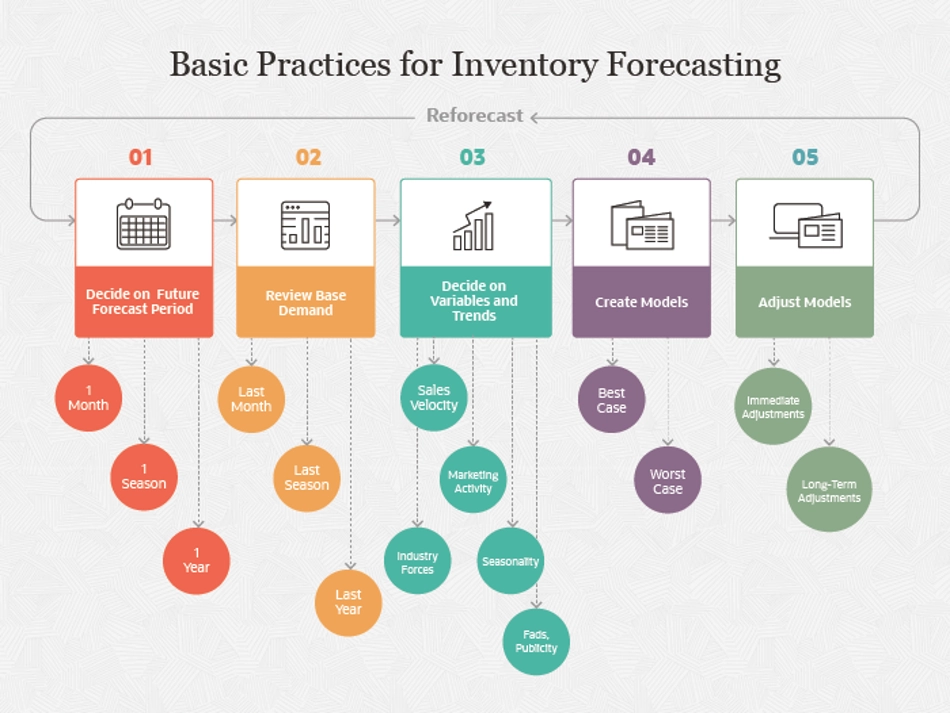In the B2B transactions realm, the digital marketplace has ascended to paramount importance. The agility offered by e-commerce platforms is underpinned by the precision of backend operations, particularly inventory management. E-commerce demand forecasting emerges as a pivotal tool, enabling businesses to navigate the complexities of supply and demand with remarkable acuity.
This technique harnesses the predictive power of data analytics to shape inventory strategies that are responsive and robust. The implementation of such forecasting is not just an enhancement but a revolution in the realm of B2B e-commerce, refining the way inventory is planned, managed, and optimized. This article delves into the transformative influence of e-commerce demand forecasting on inventory management, illuminating the competitive edge it grants in the B2B e-commerce sector.
Before digital transformation took center stage, inventory management in e-commerce was largely a reactive process. B2B organizations often relied on historical sales data and manual inventory tracking, which were susceptible to human error and delays. This method was fraught with inefficiencies, leading to either overstocking, which tied up capital and storage space, or stockouts, which resulted in lost sales and damaged customer relationships.
The advent of ecommerce demand forecasting marked a turning point. It introduced a proactive stance, employing sophisticated algorithms to anticipate customer needs. By analyzing patterns and trends, B2B e-commerce could adapt to market shifts with unprecedented responsiveness, laying the groundwork for the revolutionary changes that would follow.
E-commerce demand forecasting is the practice of predicting customer demand through analytical and statistical tools to drive informed inventory decisions. This facet of e-commerce leverages technologies such as AI and machine learning to parse through vast datasets, identifying patterns and anomalies that human analysts might overlook.
Data analytics plays a crucial role, with real-time data streams enabling a pulse on current market dynamics. This method eschews traditional static models for a more agile approach, integrating variables like market trends, economic indicators, and consumer behavior analytics. The result is a forecasting model that’s not only descriptive but also predictive and prescriptive, allowing B2B ecommerce entities to stay one step ahead in inventory management.

Source: Oracle Netsuite
The integration of e-commerce demand forecasting into inventory management reaps multiple benefits. By providing an accurate estimate of future demand, businesses can significantly reduce instances of stockouts and overstock. This leads to an optimized inventory level that ensures product availability without incurring unnecessary costs associated with excess stock.
Improved cash flow is another tangible benefit, as better forecasting helps in placing orders more strategically, maintaining a balance between supply and demand. Businesses can also pivot swiftly in response to market trends, aligning inventory with consumer demands. For example, if a forecasting model predicts an uptick in demand for a particular product based on seasonal buying patterns, B2B e-commerce businesses can adjust their inventory accordingly to capitalize on the potential upswing in sales.
For B2B ecommerce companies to benefit from e-commerce demand forecasting, it’s essential to integrate these tools seamlessly with existing inventory systems. Creating a data-driven organizational culture, where decisions are made based on predictive analytics, is another key strategy.
Ongoing monitoring and refinement of forecasting models are crucial to maintain their accuracy over time. Staff training is also vital; employees must understand how to interpret forecasting data and translate it into actionable inventory management strategies. These steps ensure that B2B e-commerce companies can leverage forecasting tools to their full potential.
Despite the advantages, e-commerce demand forecasting is not without its challenges. The accuracy of forecasts heavily depends on the quality of input data. Anomalies and inaccuracies can lead to skewed predictions. Moreover, while algorithms provide robust predictions, they must be balanced with industry expertise and human intuition. Businesses also need to maintain flexible inventory strategies to accommodate potential deviations from forecasted demand.
E-commerce demand forecasting has indisputably revolutionized inventory management in the B2B e-commerce sector. By adopting these advanced predictive tools, companies not only streamline their operations but also gain a significant competitive edge. The call to action for B2B companies is clear: invest in cutting-edge demand forecasting technologies and strategies to navigate the future of e-commerce with confidence.
Unlock the potential of precise demand forecasting with Netscribes’ advanced analytics. With Netscribes Data and Analytics solutions seamlessly align your inventory management with real-time market demands. To understand how our data-driven B2B e-commerce insights can transform your supply chain efficiency, contact us today.